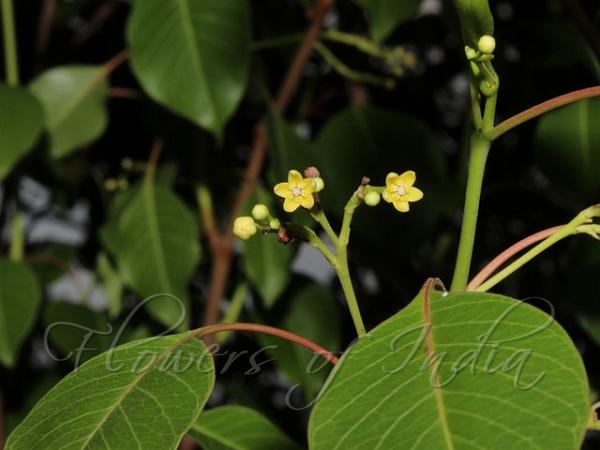|
| Amruthapala |
|

|

| File size | 84193 |
| Original date | 5/27/14 9:21 AM |
| Resolution | 640 x 480 |
| Flash | Flash fired |
| Focal length | 55.0mm |
| Exposure time | 1/200s |
| Aperture | 36.0 |
| Focus Distance | |
| Metering Mode | Multi-segment |
| Camera make | Canon |
| Camera model | Canon EOS 600D |
| Sensor type |
|
|
|
|
Photo: |
Botanical name: Decalepis arayalpathra Family: Apocynaceae (Oleander family)
Synonyms: Janakia arayalpathra
Synonyms: Janakia arayalpathra
Amruthapala is a rare and threatened plant from
Western Ghats. It is a woody shrub with root tuberous, strongly
smelling. Stem, leaf-stalks and leaves reddish brown. Leaves are like
that of Peepal, 4-6.5 x 2-3.5 cm, ovate, apiculate at tip, round to
broadly attenuate at base, entire or slightly wavy on margins; vein
reticulations prominent on lower side; leaf-stalks 2.5-3 cm long. Small
flowers are borne in axillary cymes, carried on slender, 2-3 cm long
stalks. Calyx is bell-shaped. tube about 0.1 cm long, sepals 5,
0.05-0.1 cm long, ovate. Stamens 5. Carpels 2, apocarpous; ovules many
in each carpel; stigma 5-angled. Follicles are linear, 3-3.5 cm long,
0.5-0.6 cm diameter, cylindric, tip tapering. Seeds many, 0.5-0.6 cm
long, 0.25-0.3 cm wide, laterally compressed, winged on margins; wings
variously curved; coma of white silky hairs 1.5-1.8 cm long.
Amruthapala is endemic to southern forests of the Western Ghats region
of Kerala, distributed at an elevation of 800-1200 m and growing in the
crevices of rocks.
Medicinal uses: The tuberous roots of the
plant are highly aromatic and the native Kani tribes use it as an
effective remedy for peptic ulcer, cancer like afflictions and as a
rejuvenating tonic. Recent pharmacological investigations of the root
extract of the plant revealed immuno-modulatory and anticancer
properties.
The tuberous roots of the
plant are highly aromatic and the native Kani tribes use it as an
effective remedy for peptic ulcer, cancer like afflictions and as a
rejuvenating tonic. Recent pharmacological investigations of the root
extract of the plant revealed immuno-modulatory and anticancer
properties.
Medicinal uses:
 The tuberous roots of the
plant are highly aromatic and the native Kani tribes use it as an
effective remedy for peptic ulcer, cancer like afflictions and as a
rejuvenating tonic. Recent pharmacological investigations of the root
extract of the plant revealed immuno-modulatory and anticancer
properties.
The tuberous roots of the
plant are highly aromatic and the native Kani tribes use it as an
effective remedy for peptic ulcer, cancer like afflictions and as a
rejuvenating tonic. Recent pharmacological investigations of the root
extract of the plant revealed immuno-modulatory and anticancer
properties. Identification credit: Anurag Sharma, Vijayasankar Raman
| Photographed in Amruth Herbal Gardens, FRLHT, Bangalore. |